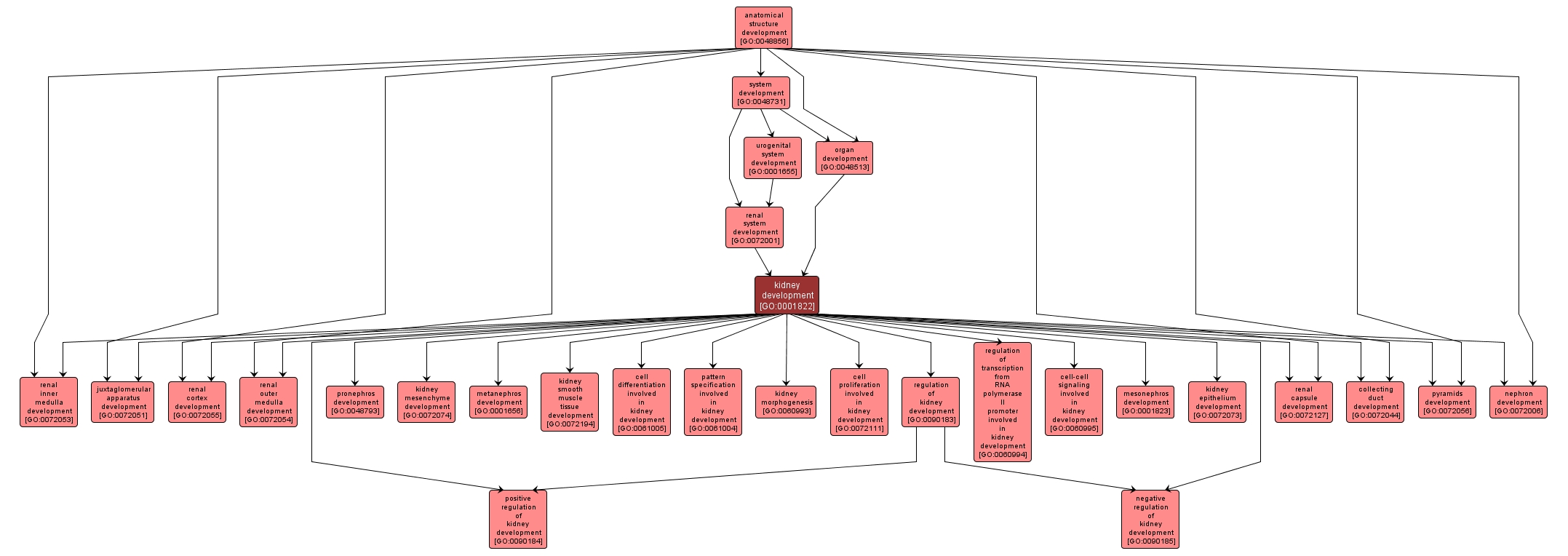GO TERM SUMMARY
|
| Name: |
kidney development |
| Acc: |
GO:0001822 |
| Aspect: |
Biological Process |
| Desc: |
The process whose specific outcome is the progression of the kidney over time, from its formation to the mature structure. The kidney is an organ that filters the blood and/or excretes the end products of body metabolism in the form of urine. |
| Synonyms:
|
|

|
INTERACTIVE GO GRAPH
|














